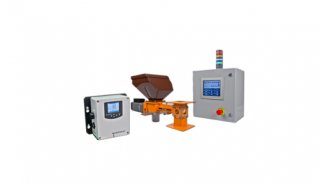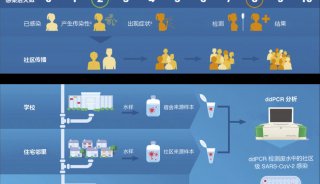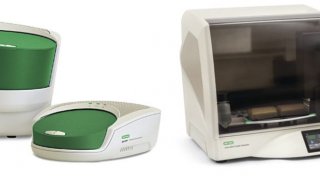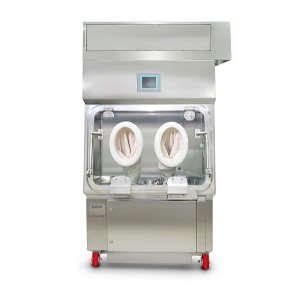基本无菌化技术2
STERILIZATION
Sterilization is the process that is intended to kill or remove all types of micro-organisms. There are two principal st erilization methods:
1) Physical (dry heat or saturated steam)
2) Chemical (ethylene oxide gas or chemical liquids).
Factors which determine the method to be used are the type of micro-organisms involved, the nature of the article to be sterilized and the time available for sterilization.
Physical Methods (Steam)
Steam sterilization (frequently referred to as autoclaving) depends on the use of steam above 100oC. Temperatures ranging from 121-134oC at pressure s of 15-30 psi are generally recommended. The biocidal action of moist heat is a denaturation of major cell constituents. Many sterilizers are designed to provide an automatic sterilization cycle. In the first stage of the cycle, air is evacuated and the chamber brought to the pre-set sterilizing temperature, which is maintained for a holding period sufficient to kill all microbial contaminants. Minimum holding times for the sterilization of medical equipment are 15 minutes at 121oC, 10 minutes at 126oC, and 3 minutes at 134oC. The steam is then removed and instrument packs are allowed to dry or liquids cool. The drying stage may be adjusted to suit the load.
The chamber is then pressure by the introduction of filtered air.
The recommende d periods of exposure vary with the nature of the article to be sterilized and the method used to wrap the article. Specific details are available from the references at the end of the chapter.
Steam sterilization has the advantage of rapid penetr ation of wrapped materials with the destruction of all viruses and bacteria, including the most resistant spores. The sterilization of different supplies is more readily controlled than in other types of sterilizers. However oils, grease and powdered subs tances cannot be sterilized by this method. The steam autoclave must be maintained in good repair and operated correctly in order to perform to specifications. Sterilization failure can occur when machines are not regularly serviced.
Steam autocla ve function should be monitored continuously using one or more of several commercially available indicator systems. The color change on a chemical dye impregnated indicator strip placed within the pack can provide a convenient and rapid visual check thatt he appropriate sterilization conditions were reached. Function should also be monitored on a regular basis using commercially available biological indicators. Spore strips of Bacillus stearothermophilus are placed within the wrapped article prior t o sterilization. After sterilization the strip is incubated at 57oC for 48 hours. The absence of growth indicates effective sporicidal autoclave action.
Chemical Methods (Gas)
Ethylene oxide gas is effective against all types of mic ro-organisms. The biocidal action of this gas is considered to be alkylation of nucleic acids. It is non-corrosive and safe for most plastic and polyethylene materials. However, it is not applicable to liquids or to articles in impervious packaging materi al. It cannot be used to sterilize animal diets due to the potential toxic effects of this gas. It can also be a toxic hazard for animals receiving prosthetic implants which have been sterilized by this gas. The operating pressures and temperatures (45-60 oC and 10-12 psi) of ethylene oxide sterilizers are considerably less than for steam units. Articles should be well aerated prior to use to minimize the potential for tissue toxicity. Aeration should be done in a manner which minimizes exposure of personn el.
This can be accomplished through the use of self-aerating sterilizers or separate aeration cabinets.
Ethylene oxide gas is a potential carcinogen and mutagen and represents a potential occupational health hazard for personnel operating sterilizers. Operation of gas sterilizers and aerators should be in strict conformance with manufacturers' recommendations and institutional policies. Personnel exposure should be minimized by appropriate ventilation of exhaust gas. A regular monitoring program for personnel should be in place.
Gas sterilizer function should be monitored continuously using one of several commercially available indicator systems. The color change on a chemical dye-impregnated indicator strip placed within the pack can provide a convenient and rapid visual check that the appropriate sterilization conditions were reached. Function should also be monitored on a regular basis using a commercially available biological indicator such as spore strips of Bacillus subti lus which are placed within the wrapped article prior to sterilization. After sterilization the strip is incubated at 37oC for 24 hours. The absence of growth indicates effective sterilization.
Temperature-sensitive adhesive tape used to secur e packages prior to sterilization only indicates that the package has been exposed to the sterilizer; this tape does not monitor sterilizer function.
Chemical Methods (Liquids)
The use of chemical solutions as a sterilization techni que for surgical equipment is frequently employed, but it should be stressed that most solutions only disinfect and do not guarantee sterility. When the necessity for maintaining sterility is a critical factor, as in the implantation of prosthetic devices , indwelling catheters or vascular access ports, disinfection in chemical solutions is not recommended. Such prostheses should be thoroughly sterilized by either gas or steam. Chemical solutions, however, offer the advantages of safety for delicate and th ermolabile plastics.
Other limitations of chemical solutions should also be appreciated. Equipment must be thoroughly cleaned before immersion, as chemical action is ineffective in the presence of proteins or fats. There are currently no indicator s commercially available to monitor the effectiveness of this sterilization method.
Alcohols are neither sporicidal nor viricidal. They are not stable and lose effectiveness through evaporation. Alcohols cannot be used for instruments that have pl astic or cemented parts.
The chlorine compounds exert their biocidal action by oxidization. The for mulations which require the mixing of acid and base components with water to generate chlorine dioxide, offer the advantages of wide spectrum bioci dal action and a safe alternative to the more hazardous phenols or formaldehydes. The active shelf life of mixed chemicals is reported to be 24-48 hours.
If chemical sterilization of instruments is the method to be used, it can be performed in cov ered trays containing fresh solutions. A two-tray system, one each for even-numbered and odd-numbered days, will ensure that instruments have a full 24-hour contact time.
























